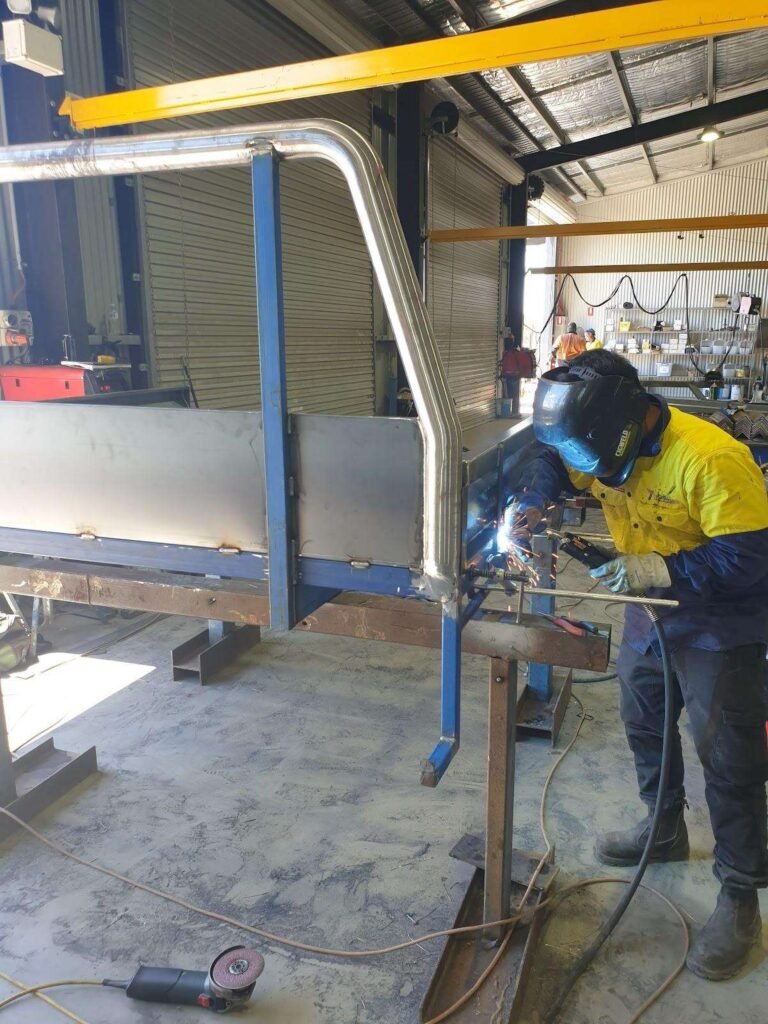
Fabrication is the process of shaping metal or other materials into objects or products. The most common fabrication material is steel, but aluminum is becoming an increasingly popular choice for fabrication projects due to its many advantages. Fabrication and welding companies in Griffith, NSW, like Topweld, have several fabrication services that offer aluminum fabrication, and it’s important to understand the basics of working with this material before choosing a fabrication service.
Table of Contents
Why is aluminum used in fabrication?
Aluminum is a corrosion-resistant, lightweight metal and has a high strength-to-weight ratio. It can be used in various fabrication projects, including structural components, marine hardware, and transportation parts. Aluminum fabrication services in Griffith, for example, can create custom products from aluminum sheet metal or tubing. They can also provide finishing services such as powder coating, anodizing, and polishing.
What are the different types of aluminum alloys?

Aluminum has a wide range of alloys that offer different properties. The three most common types of aluminum alloys are:
– 6000 series alloys: This alloy is corrosion-resistant and has good formability. It is often used in aerospace and transportation applications.
– 7000 series alloys: This alloy is strong and corrosion-resistant, making it ideal for structural applications.
– 8000 series alloys: This alloy is very strong and has high corrosion resistance. It is commonly used in marine applications.
What are the different fabrication methods?
There are several fabrication methods that can be used to work with aluminum, including machining, welding, and forming. Machining is a process where metal is cut into specific shapes with a machine. Welding is a process where two pieces of metal are joined together by melting them and pressing them together. Forming is a process where metal is pressed or hammered into the desired shape.
How is aluminum welded?
Aluminum can be welded using either Tungsten Inert Gas (TIG) welding or Metal Inert Gas (MIG) welding techniques. TIG welding is the most common method, as it produces a high-quality weld with minimal distortion. MIG welding is also a viable option, but it can cause more distortion in the aluminum weld than TIG welding.
What are the common hazards associated with aluminum fabrication?

There are several hazards associated with working with aluminum, including:
– Dust: Aluminum dust can be harmful if inhaled, so it’s important to wear a respirator when working with this material.
– Heat: Aluminum can cause burns if it comes into contact with skin, so it’s important to use caution when working with heat sources.
– Chemical exposure: Many of the chemicals used in aluminum fabrication can be harmful if ingested or inhaled, so it’s important to wear the appropriate safety gear when working with them.
What tips should be followed when working with aluminum?
Safety precautions should always be taken when working with aluminum, as it can be hazardous. In addition, the following tips should be followed when working with this metal:
– Use the right tools: Using the wrong tools can cause damage to the aluminum and lead to poor quality welds. Make sure you are using the right tools for the job.
– Take your time: Rushing through a fabrication project can lead to mistakes and poor quality welds. Make sure you take your time and plan out each step of the process.
– Use caution when welding: Welding can be dangerous if not done correctly. Make sure you are familiar with the welding process before welding aluminum.
– Wear safety gear: Always wear appropriate safety gear when working with aluminum, including a respirator, safety glasses, and gloves.
What are some common problems that can occur when fabricating with aluminum?
There is no perfect metal, and there will always be some problems when fabricating with it. Some common problems that can occur when working with aluminum include:
– Warping: Aluminum can warp if it is not properly cooled down after fabrication. Make sure you allow the metal to cool down slowly before welding or machining it.
– Cracking: Aluminum can crack if subjected to too much stress. Be careful when forming or welding the metal, and make sure you use the correct equipment for the job.
– Poor welds: Improper welding can lead to poor quality welds that may not hold up under stress. Make sure you are familiar with the welding process before attempting to weld aluminum.
In conclusion, aluminum is a strong and durable metal that can be used in various fabrication applications. It is important to take safety precautions when working with this material, as it can be hazardous. Make sure you use the right tools and take your time fabricating with aluminum to avoid common problems. Fabrication services in Canberra, NSW, are a great option for those looking to work with this versatile metal.